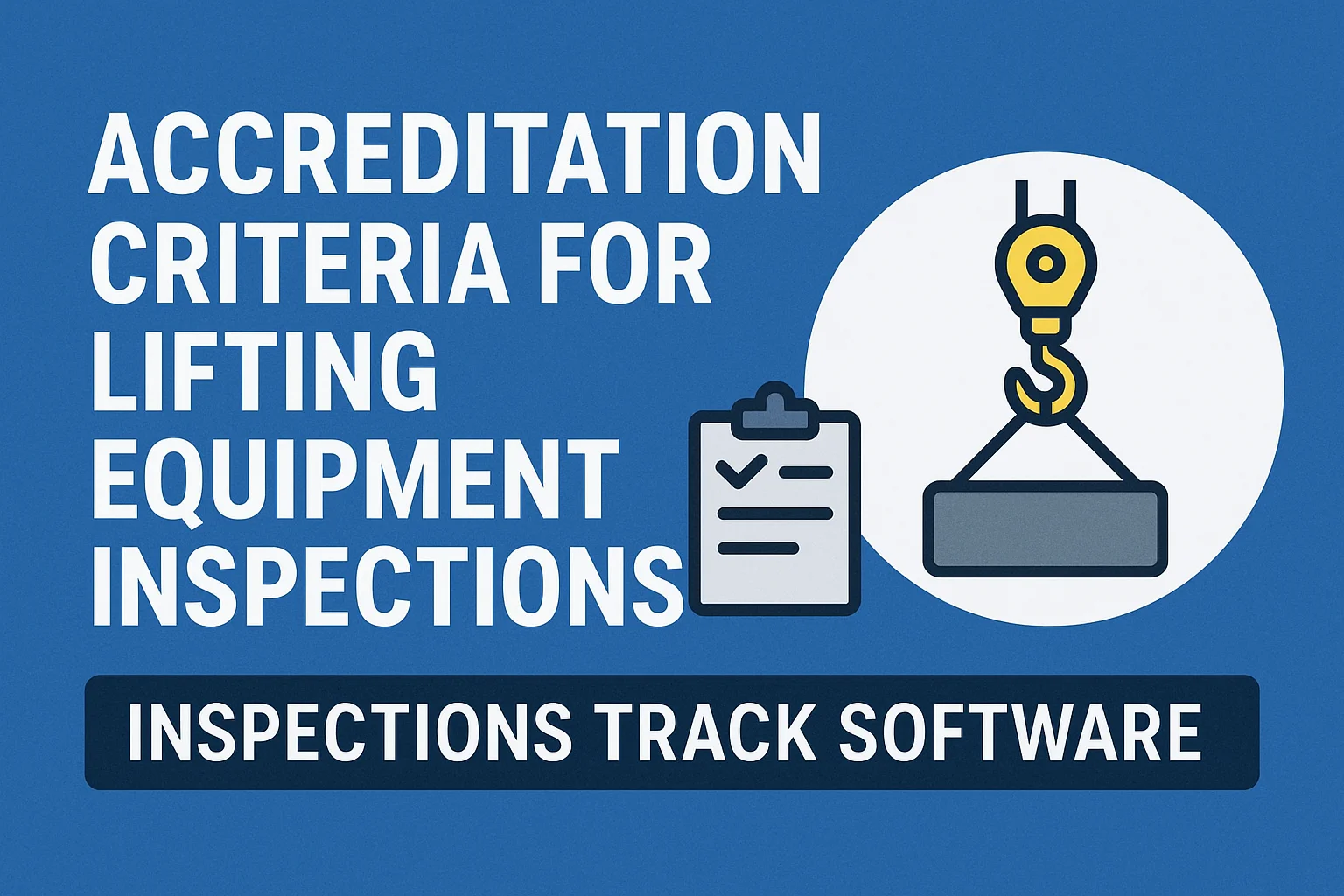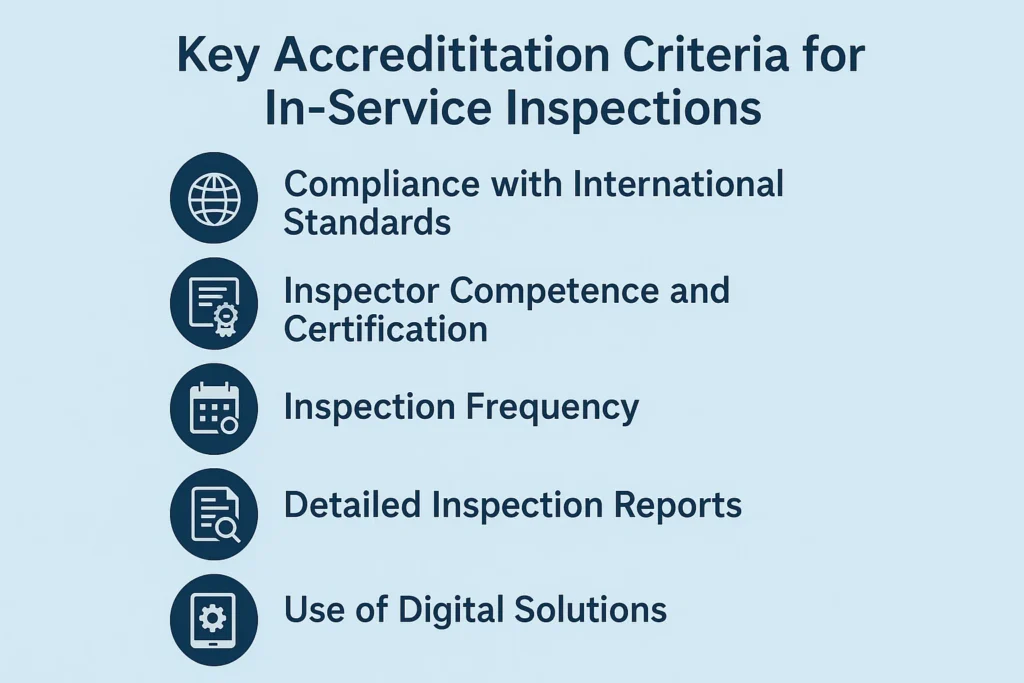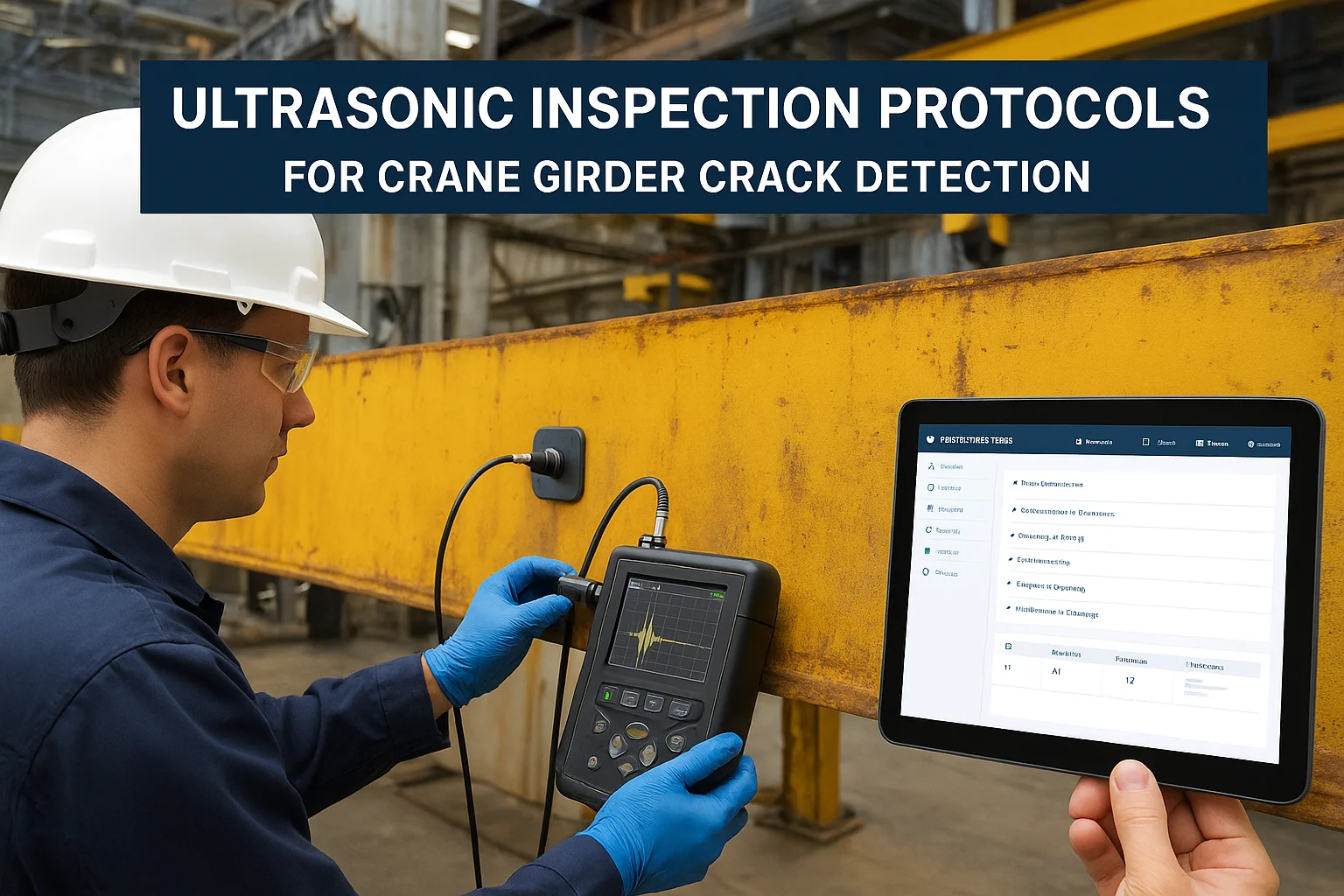Inspections Track Software For Oil and Gas Inspection Industry

Ensuring the safety and reliability of lifting equipment is critical in industries like oil and gas, construction, and manufacturing. To achieve this, organizations must follow accreditation criteria for in-service inspection of lifting equipment. Accreditation not only ensures compliance with safety regulations but also builds trust, reduces downtime, and extends the lifecycle of assets.
In this guide, we’ll break down the Accreditation criteria for lifting equipment inspections explain why they matter, and show how Inspections Track Software can help streamline inspection processes in the oil and gas industry.
Accreditation provides a benchmark for quality and safety. For equipment such as cranes, hoists, forklifts, and winches, in-service inspections ensure they remain safe to operate under load.
Some real-world examples include:
Failure to meet inspection and accreditation standards can result in:

Inspections must align with globally recognized standards such as:
Accredited inspections require qualified personnel who:
Equipment must be inspected at intervals set by law or industry best practices:
| Equipment Type | Typical Frequency | Example Use Case |
|---|---|---|
| Cranes & Winches | Every 6 months | Offshore lifting operations |
| Forklifts | Every 12 months | Warehousing and logistics |
| Hoists & Slings | Every 6 months | Manufacturing and assembly lines |
Accreditation requires well-documented reports covering:
Traditional paper-based reporting is being replaced by digital inspection tools for accuracy, transparency, and efficiency.
For the oil and gas industry, compliance and safety are non-negotiable. Inspections Track Software helps companies achieve accreditation by:
Example:
An offshore oil rig with 30 cranes uses Inspections Track Software to schedule inspections. Instead of relying on manual logs, the software automatically alerts inspectors when the next crane inspection is due. Reports are instantly stored and accessible for audits, making compliance easier.

By following the criteria and leveraging technology, organizations can:
Accreditation criteria for in-service inspection of lifting equipment are vital for maintaining safety, efficiency, and compliance. By adopting digital tools like Inspections Track Software, businesses in the oil and gas sector can simplify accreditation, improve reliability, and ensure smoother operations.
Staying compliant isn’t just about ticking boxes—it’s about safeguarding lives, assets, and reputation.
Read More : what are the three main types of audits in oil and gas
Accreditation ensures inspections meet safety standards, reduce risks, and keep equipment compliant with international regulations.
Inspection frequency depends on equipment type, but most cranes, hoists, and slings require checks every 6–12 months.
Yes. Tools like Inspections Track Software automate schedules, provide digital checklists, and generate audit-ready reports.

In the oil and gas industry, crane girders play a vital role in ensuring safe and efficient operations. Detecting cracks and defects early is critical to avoid catastrophic failures. Ultrasonic inspection (UT) is a proven…

Safety in the oil and gas industry depends heavily on reliable equipment, and Pressure Relief Valves (PRVs) are one of the most important safeguards. When PRV inspections are carried out properly, facilities can prevent costly…
SkySoft Connections provides quality IT services around the globe. Our services begin with experience and end with dedication, ensuring innovation and reliability
© Copyrights, 2024 All Rights Reserved Skysoftconnections
Contact us
Get notified about new articles